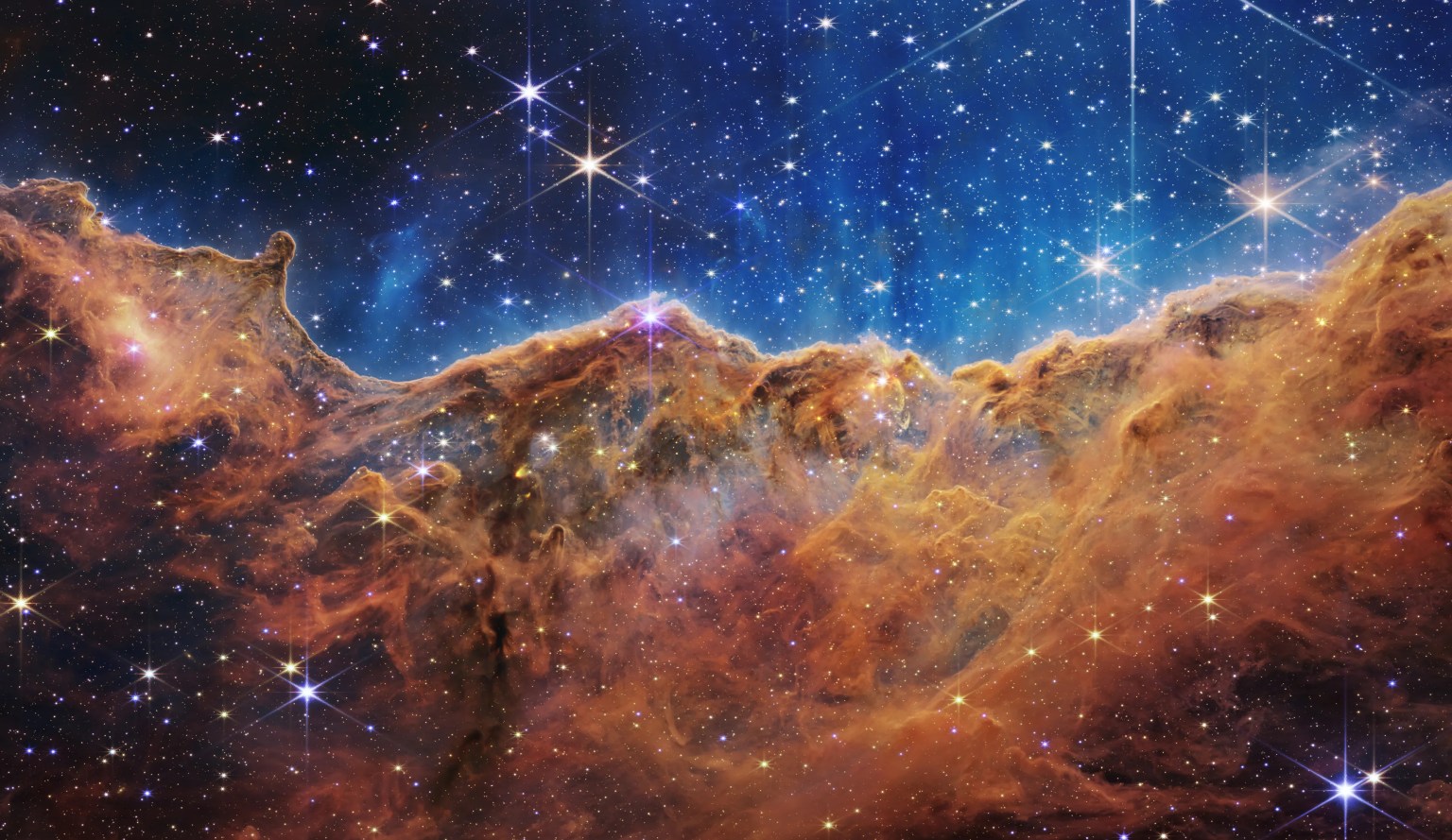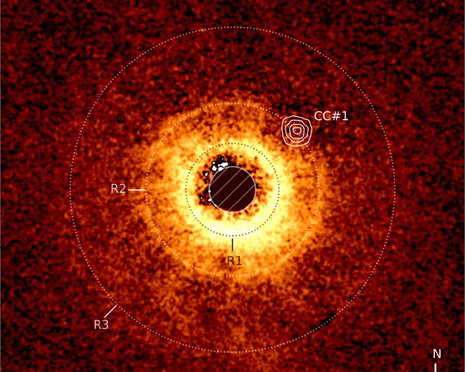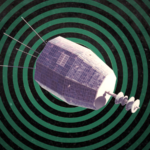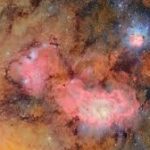Introduction: A Game-Changer in Exoplanet Discovery
NASA’s James Webb Space Telescope (JWST) has just achieved another milestone — capturing its first direct image of a Saturn-mass exoplanet, dubbed TWA 7 b. This marks the smallest planet ever imaged by any telescope using direct imaging techniques. Unlike earlier gas giant discoveries, this world is just 30% the mass of Jupiter, making it a closer analog to the planet Saturn in our own solar system.
Most of the nearly 6,000 confirmed exoplanets have been found using indirect methods like transits and radial velocity. But this direct capture of TWA 7 b proves that Webb can see much smaller, colder planets than ever before — a step closer to imaging Earth-like worlds.

Detecting a Hidden World: How Webb Found TWA 7 b
The discovery, published in the journal Nature, relied on JWST’s powerful Mid-Infrared Instrument (MIRI) and a coronagraph, which blocks out starlight to reveal faint nearby objects. The target star, TWA 7, is a young red dwarf just 34 light-years from Earth. Its dusty circumstellar disk made it an ideal candidate for planet-hunting.
After carefully masking the glare of TWA 7, astronomers found a faint, infrared point source roughly 50 AU (50 times the Earth–Sun distance) from the star. This places TWA 7 b in a dust ring gap, consistent with the gravitational influence of a planet carving out its orbital path. The object’s mass, brightness, and position strongly match predictions for a young, Saturn-like planet.
Why This Discovery Is Historic
Direct imaging of exoplanets is extremely difficult, especially for smaller, cooler planets. Prior to TWA 7 b, most directly imaged exoplanets were massive — often 5 to 10 times the size of Jupiter. In contrast, TWA 7 b is about 10 times less massive than those, and this makes it a groundbreaking find.
- Smallest directly imaged planet – Only 0.3 Jupiter masses.
- High orbital distance – Located 50 AU from TWA 7.
- Proof of concept – Shows that JWST can image smaller planets with precision tools like the coronagraph.
A Step Toward Imaging Earth-Like Planets
This discovery validates what astronomers have long hoped: that Webb’s instruments are capable of seeing not just hot Jupiters, but potentially smaller, rocky planets in the future. With improvements to data processing and longer observation times, scientists believe that JWST could eventually image planets just 10% the mass of Jupiter.
This brings us closer to the ultimate goal of directly imaging Earth analogues — rocky planets in habitable zones that could support life. Future missions, like the proposed Habitable Worlds Observatory, will build upon this success with even more advanced coronagraphs and starshades.
Scientific Implications: Planet Formation and Disk Interaction
Scientists believe that TWA 7 b’s location in a dust ring gap reveals crucial evidence of planet-disk interactions. This supports current models of planet formation, where young planets clear paths through protoplanetary disks. The face-on view of TWA 7’s disk was critical to spotting these structures with clarity.

Further monitoring of TWA 7 b could provide insight into how Saturn-like planets evolve over time, their atmospheres, and how they shape surrounding disks. This is especially important for understanding the early solar system and the formation of giant planets.
Conclusion: The Future of Planet-Hunting Looks Brighter Than Ever
The successful direct imaging of TWA 7 b is not just a technological feat — it’s a beacon for what comes next in space science. As the James Webb Space Telescope continues its mission, it could open the door to identifying truly Earth-like worlds.
For now, astronomers celebrate this latest breakthrough — a confirmation that the tools we’ve built are powerful enough to see the faintest, most distant neighbors in our galactic backyard.
📌 Related Reading










